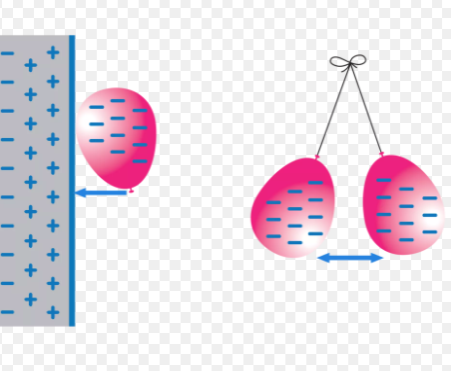
WEEK 4: STATIC ELECTRICITY
STATIC ELECTRICITY: MAGIC OR JUST SCIENCE?
A. Materials needed:
- Scrap paper (make sure they are dry)
- Balloon (or Bic pen top)
- T-shirt, or any woolen material (or even your dry hair)
B. Instructions:
- Tear the paper into small pieces and place them on a flat surface.
- ‘Charge up’ the balloon by rubbing it against the T-shirt or on your dry hair for 15-20 seconds.
- Touch the charged balloon lightly against the paper pieces.
- Pick up the balloon and see what happens!
SO WHY DOES THE PAPER STICK TO THE BALLOON?
The Greek philosopher and Mathematician, Thales Miletus was the first person to describe static electricity in the sixth century B.C.E. He observed that, when he rubbed amber (a fossil-derived material similar to plastic), with wool, the amber attracted straw. It was later established that this observation was due to two main phenomena: Friction and Induction. Let’s now explain your own observation in relation to these phenomena.
All materials exist as electrically neutral; that is, they have the same number of electrons (negatively charged particles) and protons (positively charged particles). When the balloon is rubbed with the wool, frictional force is generated,enabling the wool to lose electrons to the balloon. So the balloon becomes negatively charged, because it now has more electrons than protons. When this negatively charged balloon is brought near the pieces of paper, the excess electrons of the balloon repels the electrons within the paper, leaving only protons at the outer surfaces of the paper. This process is called induction.
Now the balloon is negatively charged and the pieces of paper have positive charges on their surfaces. The pieces of paper are then attracted to the balloon.
TAKING IT FURTHER
What happens when two charged balloons are hung on strings and brought close to each other?
Repeat this experiment, bringing the charged balloon near an empty soda can.

